Shopping Tools
Advertisement
2011 Dodge Durango - First Drive Review
Elegant and relevant: Dodge leaps back into the thick of the SUV game.
BY STEVE SILER
November 2010
We’ll cut to the chase: This 2011 Dodge Durango is the brand’s best vehicle not called Charger. After a two-year hiatus, the Durango is back, with a unibody design based on the same underpinnings that spawned Jeep’s stellar 2011 Grand Cherokee, which came in tops in its first comparo. As handsome as the last one was brash, the 2011 Durango offers rear- or all-wheel drive, standard seven-butt seating (the Jeep is shorter and seats only five), a swank soft-touch and chrome-trimmed interior, and assembly quality that rivals anything else in the segment. Although the new Durango is heavy—weights are quoted at 4750 to 5100 pounds with the V-6 and 5200 to 5350 pounds with the Hemi V-8—Dodge is nonetheless positioning it as a performance-oriented alternative to the current segment offerings, a claim backed up by the retention of rear-wheel drive and the resurrection of the Durango R/T, which nabs a standard Hemi V-8, unique exhaust tuning, sportier styling, and a lowered, tuned suspension.
|
|
Enjoyable to Drive, for a Big ’Un
We sampled V-6– and V-8–powered Durangos on the roads in and around Napa Valley, California, and as with the new Grand Cherokee, the Teutonic foundations—the architecture will also be put to work under the next Mercedes M-class—pay big dividends in the driving department. The base 290-hp, 3.6-liter Pentastar V-6 is quiet and smooth, although it needs to be revved to its 6400-rpm redline to access all 290 hp. Its torque peak of 260 lb-ft is also somewhat high at 4800 rpm, so we often found ourselves deep in the throttle in our attempt to drive with any sense of spirit. With 360 hp and 390 lb-ft of torque at a more accessible 5150 and 4250 rpm, respectively, the Hemi V-8 makes for brisker acceleration, with an extroverted rumble replacing the V-6’s mechanized whir.
|
|
We didn’t have time to strap on test gear to any vehicles, but we expect the heavier Durango to add 0.2 to 0.3 second to the 0-to-60-mph times we’ve attained from Grand Cherokees with similar powertrains (we recorded 8.4 seconds in V-6 Laredo trim and 7.5 seconds in V-8 Overland regalia, both with four-wheel drive). Chrysler’s planned swap of both vehicles’ ho-hum five-speed automatics for more modern units with at least one more ratio could help hasten acceleration. (Most Pentastar-equipped Chrysler vehicles have six-speed automatics; a ZF-designed, Chrysler-built eight-speed is also in the company’s future.) The extra gears should help raise the Durango’s marginal-to-awful fuel-economy figures, estimated at 16 mpg city and 22 to 23 highway for V-6 versions and 13 to 14 mpg city and 20 highway for V-8 models. (Many vehicles in the segment return similar numbers, but that doesn’t make them any more acceptable.)
Thanks to its unibody architecture, nearly 50/50 weight distribution, and more carlike driving position, brisk runs along mountain roads in a Durango are possible and even sort of enjoyable. The steering provides actual road feel, and the brakes grab with reassuring linearity. Body motions are mannerly, allowing us to take corners at speeds we would never have attempted in the old Durango, as well as cruise at triple-digit speeds with no drama. Even more impressive is its ride smoothness, which is even better than the Grand Cherokee’s on account of the Dodge’s five-inch-longer wheelbase.
|
|
So Many Competitors. How Does It Fare?
The Durango’s four trim levels and $12,000 base-price spread give it a huge competitive set. The base Express and mid-grade Crew models will provide stiff competition for other large three rowers like the Ford Flex, Chevrolet Traverse, GMC Acadia, Honda Pilot, and Mazda CX-9, all of which are V-6–powered with output and fuel-economy figures similar to the Durango V-6’s. None of them, however, offers a V-8 or rear-wheel drive. We surmise some Ford Expedition and Chevy Tahoe shoppers may check out this Dodge, too, especially if they haven’t heard that the Durango has lost its separate frame. Those folks in particular might be interested in the Durango’s maximum towing capacities, which are 6200 pounds for V-6 models and 7400 pounds (7200 pounds with 4WD) for V-8 models.
Direct competitors for the more athletic R/T are few and are perhaps limited to—in terms of driving dynamics, anyway, and we’re stretching here—the Ford Edge Sport, which has two rows of seats and 55 fewer hp from its V-6 but some 700 fewer pounds to cart around. Finally, at the acme of the Durango food chain, the dressy, top-shelf Citadel model will take on the Buick Enclave and Lincoln MKT in V-6 form—offering more involving dynamics and snappier styling than either—and the Citadel V-8 will cast sideways glances at the pricier GMC Yukon Denali.
The vehicle we expect will be most cross-shopped with the Durango, however, has yet to go on sale. The 2011 Ford Explorer, which also has made the unibody conversion for 2011 (albeit with front-wheel-drive architecture), will stare down the Durango with multiple efficiency-minded engines and the new MyFord Touch infotainment interface.
|
|
See Ya Soon
The new Durango will be in showrooms by the end of the year, starting at $30,045 for the V-6–only Express, which includes 18-inch wheels, cloth seats, and some surprising features like remote start, three-zone climate control, a fold-flat front passenger seat, trailer-sway control, and hill-start assist. The $34,045 Crew model adds a 28-gig infotainment system with a nine-speaker Alpine audio and 6.5-inch touchscreen, keyless entry and start, a power liftgate, a roof rack, and the option to add the $5000 CrewLux package that nabs 20-inch wheels, a Garmin-powered navigation system, leather seating with heaters for the first two rows, rain-sensing wipers, and automatic high-beams. The cushy Citadel is priced at $42,645, bringing ventilated front seats, nappa leather upholstery, 20-inch chrome-clad wheels, parking and blind-spot assistance, rear cross-path detection, and adaptive cruise control. The R/T is equipped much like the Crew, with its racier bits adding a reasonable $2000 or so, putting it at $36,315. All-wheel drive is available on every model for a $2000 premium, and the Hemi is a $1495 option for the Crew and Citadel. All-wheel-drive Hemi versions will have a low-range transfer case.
The Durango—like other recent Chrysler products—has sprung back into relevance in a big way. And although we didn’t miss it while it was gone, we’re glad it’s back.
Pages: 1 Photos
- Stumble It
- Yahoo! Buzz


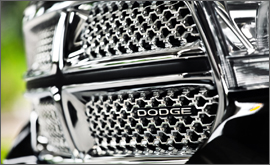
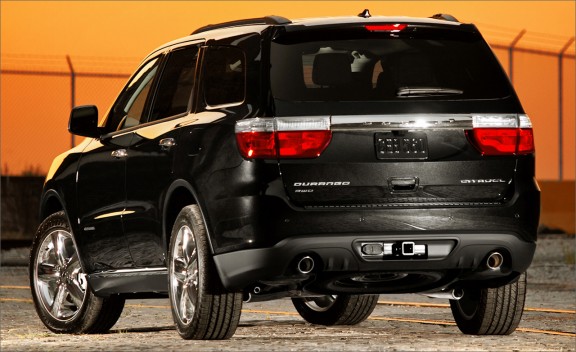




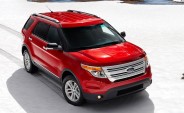
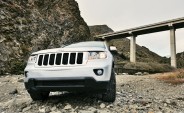
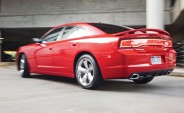
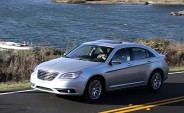

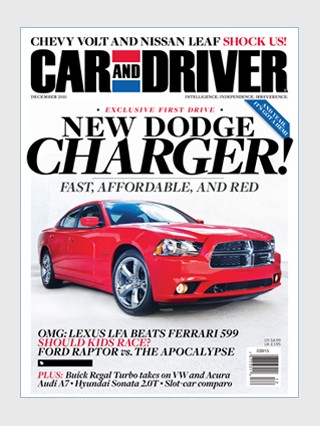


Comments
Join the Discussion